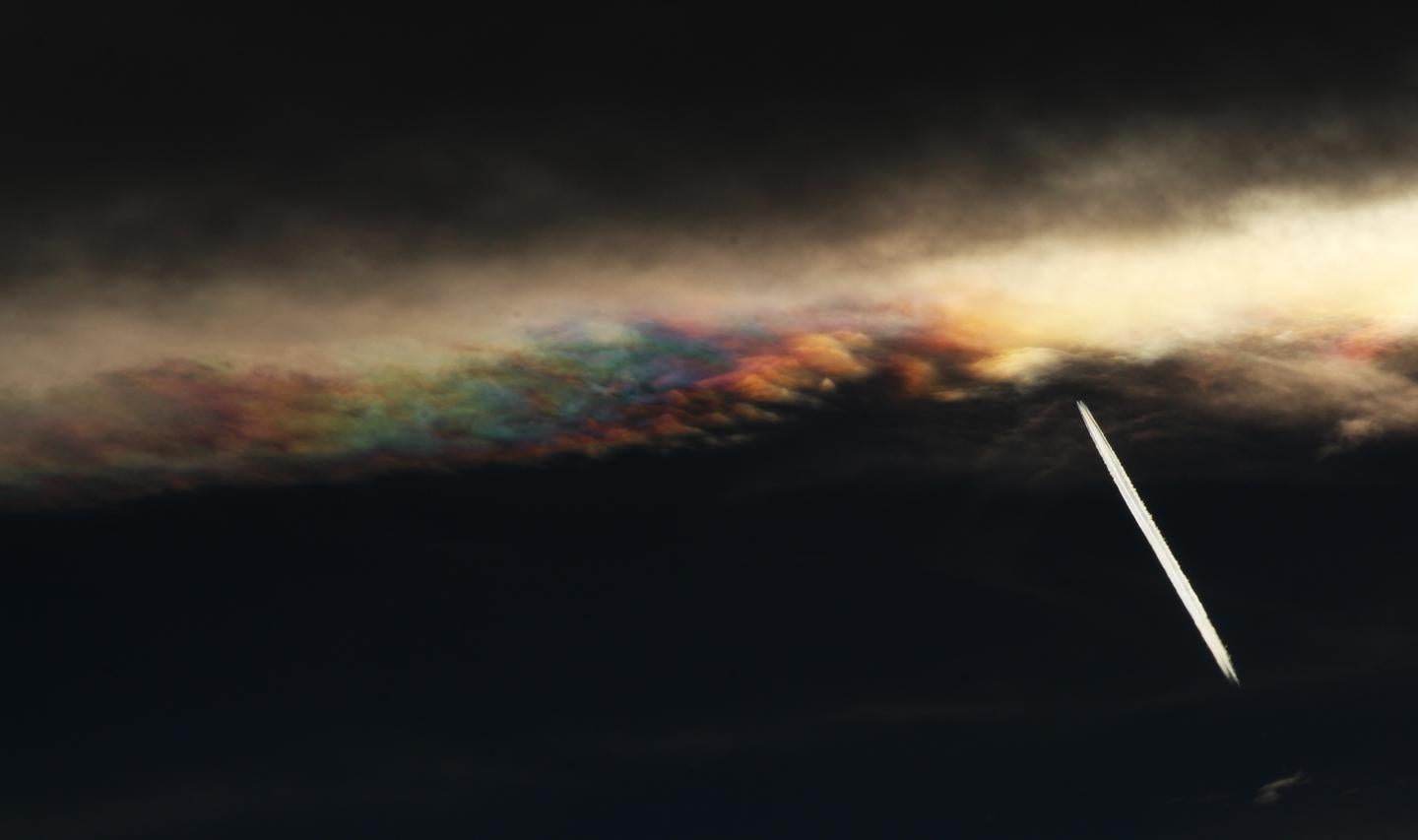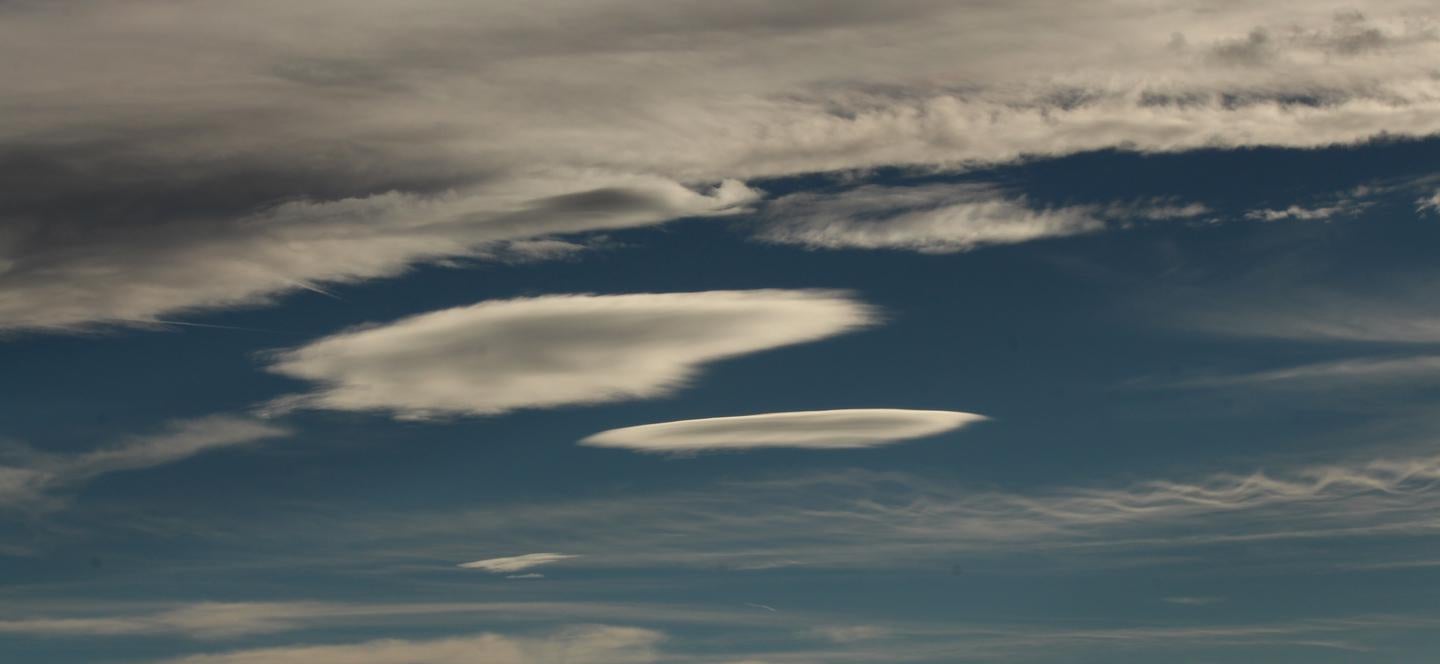Oct. 23 was the solar eclipse, as you probably well know. I was out on my deck taking a lot of pictures as the event started, but within a few minutes the clouds rolled in. As the Sun disappeared, I was pretty sure the next hour was hopeless.
As you can see in the final image in the photo gallery I put up yesterday, the clouds thinned every now and again, and I was able to get a few interesting pictures. As I watched, though, I noticed the clouds were lenticulars, lens-shaped as they were sculpted by winds blowing up and over the Rocky Mountains to the west. Having some experience with this, I kept an eye on them … and sure enough, I saw what I was hoping for: iridescence along the edges.
This colorful phenomenon is amazing and lovely, and very hard to capture in photographs. I took a lot of shots at different settings, and when I saw this one I was stunned. It may be the most beautiful photo I’ve ever taken:

Photo by Phil Plait
I mean, seriously. I took that! What you’re seeing is the edge of a cloud, fiercely lit by the Sun; by eye it was intensely white, with just a hint of color. The sky below it was actually blue, but it’s black here because I had to stop down the aperture and use a low ISO, as well as a fast exposure time.
For contrast, here’s a photo I took minutes later at settings that better show the sky:

Photo by Phil Plait
The cloud stretching across the top is the one that’s featured in the first photo, and you can see the two lenticular clouds below it. The cloud in the middle with the forked end on the left was also pretty colorful a few minutes before I took this shot. At the upper right of the photo you can see just a hint of color, too.
The colors are amazing. Pink and teal are common in iridescence, but I’ve only seen yellows once or twice.
As for the science behind this, I wrote about it before:
Iridescence is a weird phenomenon. You need lots of tiny raindrops (or ice crystals) all the same size over a large portion of the cloud. In a rainbow, the lights goes into the droplets and gets bent (twice) to create colors. In iridescence, though, the light actually bends (diffracts) around the droplets. Different colors bend by different amounts, splitting the colors apart. The size of the raindrop needs to be roughly the same size as the wavelength of light, so when I say “tiny” I mean it: The drops must be less around a micron in size! A human hair, by the way, is about 100 microns in width, so these really are teensy drops.
But it’s more complicated than just that. The cloud also has to be what’s called optically thin; that is, mostly transparent so that on average a beam of light only hits one droplet and only gets bent once. If it hits multiple drops the colors get washed out. That’s why this happens more often near the edges of clouds, where they’re thinner. On top of that, the light waves interfere with each other, similar to how waves in a bathtub add together or subtract from each others’ wave heights as you wiggle around (and please, don’t deny you’ve ever done this playing in the tub; it’s fun, and educational!). These processes combine in complicated ways to produce these different colors.
I was very excited about getting shots of the eclipse on Thursday, but to be honest, I’m a lot happier with this one than any of the pictures of the Sun I took! The lesson here is, when you’re out and about, keep your eyes and mind open to what’s going on around you, and be flexible. Goals change, and you can wind up with something a lot cooler and more beautiful than what you originally planned.